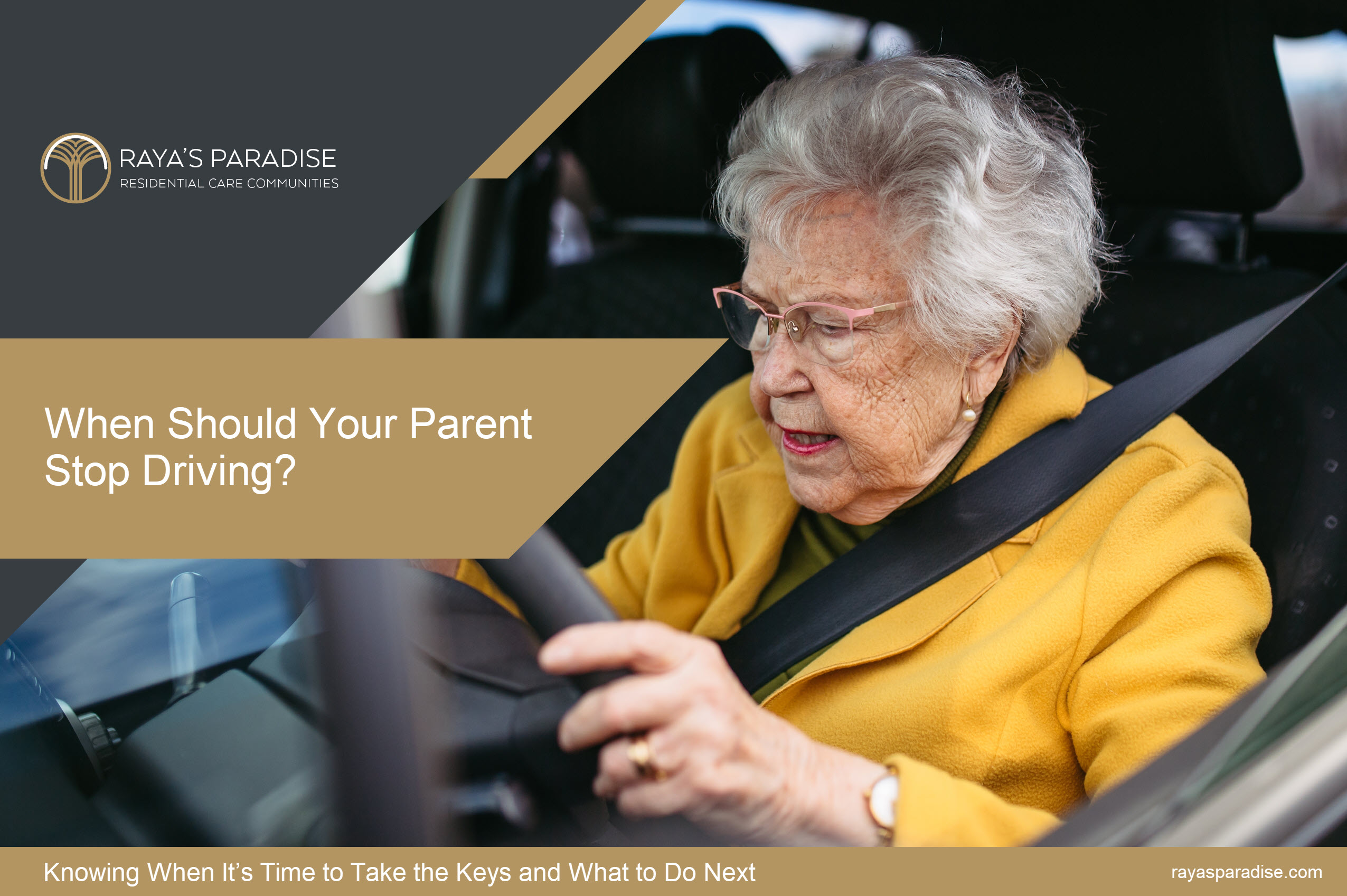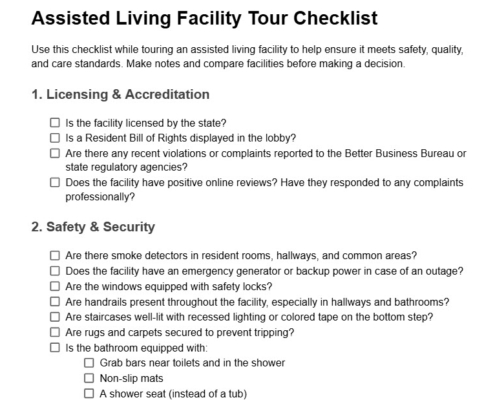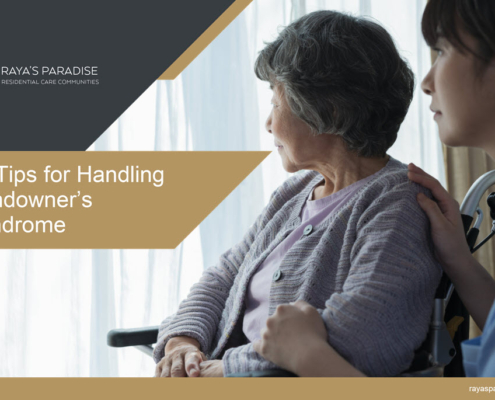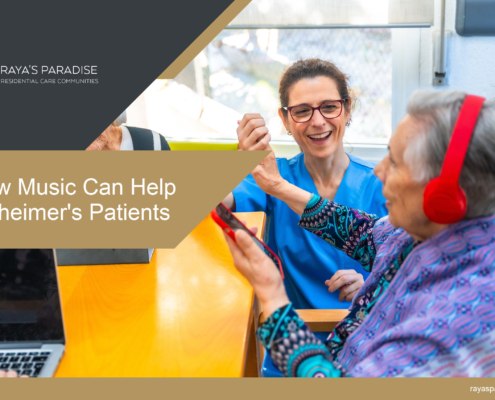Contents
- When Should Your Parent Stop Driving?
- Key Takeaways
- A Difficult but Necessary Conversation
- What to Watch For
- How to Approach the Conversation
- Supporting Your Parent Through the Transition
- Looking Ahead
- More Senior Care Resources
- What Is the Difference Between Assisted Living and Independent Living? Understanding the Options
- Assisted Living Facility Tour Checklist – Free PDF Download & Printable Guide
- Assisted Living vs. Senior Living - How Are They Different?
- Why Alzheimer's Patients Become Agitated
- Dementia vs. Ordinary Forgetfulness and Confusion
- Do You Have Compassion Fatigue?
- Helping a Senior with Dementia Remember Medicine
- When a Residential Care Community Is an Option for Temporary Hospice or Palliative Care
- Helping Loved Ones with Dementia Cope with the Loss of a Spouse
- Are You Responsible for Your Elderly Parent's Debt?
- Selling the Home of a Parent Who Has Alzheimer's
- Guide to Buying Medication Online
- Senior Day Trip Idea: Visit the Zoo
- 10 Tips for Handling Sundowner's Syndrome
- How Music Can Help Alzheimer's Patients
When Should Your Parent Stop Driving?
Knowing When It’s Time to Take the Keys and What to Do Next
Key Takeaways
There’s no specific age when someone must stop driving, but warning signs often appear in vision, memory, or physical ability.
The decision is emotional for both seniors and their families, but safety must come first.
Alternative transportation options can help older adults maintain independence without being behind the wheel.
A Difficult but Necessary Conversation
As a caregiver, few moments are more delicate than the day you realize your parent might no longer be safe behind the wheel. It’s not just about transportation, it’s about freedom, dignity, and change. And when driving becomes a risk to their safety or to others, the conversation can’t wait.
There’s no set age when someone should stop driving. Some seniors remain capable well into their 80s or beyond. But others may show signs earlier, especially if their health or cognitive function begins to decline. What matters most is noticing the warning signs and knowing when it’s time to step in.
What to Watch For
You don’t need a formal diagnosis to start paying attention. Often, it’s small patterns that begin to tell a larger story.
Visual difficulties are one of the first red flags. If your parent struggles to read road signs, maintain lane position, or respond to traffic signals, their eyesight may no longer meet safe driving standards. Conditions like glaucoma, macular degeneration, or diabetic retinopathy may already be at play—even without a diagnosis.
Memory problems are equally concerning. If your parent gets lost on familiar routes, becomes confused mid-drive, or forgets basic traffic rules, they may be facing cognitive decline. This includes early stages of Alzheimer’s or other forms of dementia that affect judgment and spatial awareness.
Fender benders, dents, or close calls can also point to a bigger issue. Damage to the car, garage, or mailbox may signal a slow loss of control or depth perception.
Physical pain or stiffness in the neck, shoulders, or back can make basic maneuvers, like turning to check a blind spot, difficult or dangerous.
Side effects from medications are another often-overlooked cause of unsafe driving. Certain prescriptions or combinations can affect alertness, reflexes, or coordination. A pharmacist or physician can review your parent’s list of medications and evaluate risks specific to driving.
How to Approach the Conversation
Bringing up driving limits with a parent isn’t easy, but it doesn’t have to be adversarial. Use specific observations, not assumptions. Bring up concerns during a calm time, not immediately after an incident.
Most importantly, offer solutions instead of simply removing independence. If your parent knows they won’t be isolated, they’re more likely to cooperate and less likely to feel resentful.
Supporting Your Parent Through the Transition
Giving up the keys is a symbolic moment for many older adults. It can feel like losing a part of themselves. Your role as an advocate and support system is critical.
Let your parent be part of the process as much as possible. Help them explore alternatives. Stay involved in their routines, especially in the early weeks after the change. Their independence may look different, but it doesn’t have to disappear. Here’s how to make that transition more comfortable.
Looking Ahead
The conversation about driving is often one of many steps toward a safer, more supported lifestyle for your aging parent.
At Raya’s Paradise, we work closely with families to create compassionate care plans that support physical well-being and emotional peace of mind, whether your loved one is still at home or considering assisted living.
We’re here to answer questions, offer guidance, and help you explore next steps, without pressure.
Call (310) 289-8834 or
Email us at info@rayasparadise.com
You can also schedule a tour to see our residential communities firsthand.

















